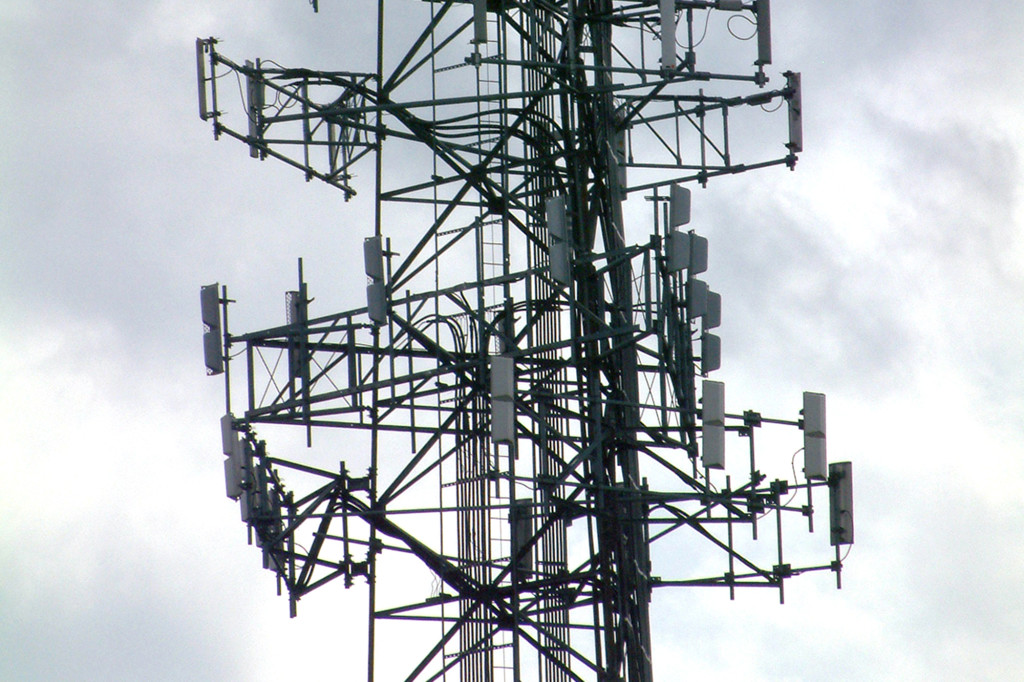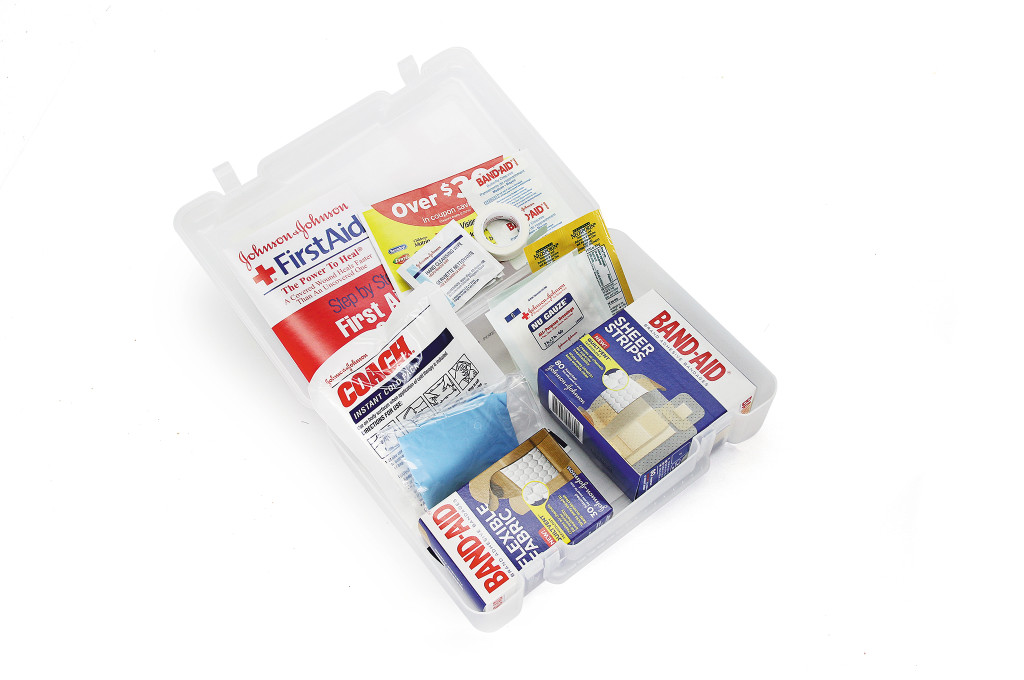RECOIL OFFGRID Gear How to Build an EDC Electronics Kit
In This Article
Any time we bring up the subject of electronics in a bug-out bag or EDC kit, there tends to be a common objection. Someone will chime in and say that electronics won't be useful in a survival situation, so you should just ditch them and rely on your physical tools and survival knowledge. Although tools and knowledge are essential, we'd disagree with the rest of that sentiment—depending on the situation, portable electronics can give you a huge advantage for communications, navigation, and comfort.

Cell phones allow us to communicate instantly over long distances, even in some survival situations.
Of course, if there's a massive electromagnetic pulse that simultaneously wipes out all cell towers, computer networks, and the power grid, there might be some truth to the claim that electronics won't help you much. In most other situations, having a working cell phone, GPS device, or rechargeable flashlight can be invaluable. Also, remember that the vast majority of disasters are confined to a small geographic region. So, even if your cell phone is displaying “no signal”, if you can travel a few miles it might become useful again.
This is why we emphasize the value of electronics, and the value of being able to recharge them. As many of us have experienced firsthand, a cell phone with a dead battery is about as good as none at all. So, you'll want to prepare several ways to recharge your batteries on the road, whether you're in a city, a rural area, a car, or the middle of nowhere.

Instead of tossing a bunch of tangled cables and loose adapters into your backpack or get-home bag, we'd advise assembling a self-contained recharge kit. This starts with a container of some sort.

Think of a EDC electronics kit as a first aid kit for your portable devices. It should be compact and organized.
For harsh environments, you may want to consider a waterproof hard-sided case, such as a Pelican Micro Case. These tough containers keep out damaging dust and moisture, so they're great if your pack might get doused with water or tossed around. They're also relatively light for their size.
Unfortunately, these cases can be bulky, and they don't compress or conform to tight spaces. So, we usually recommend a soft zip-up pouch for everyday use. They weigh almost nothing, they're inexpensive, and they keep your gear organized. These pouches are sometimes called “packing cubes” or pocket organizers, and can be found for only a few dollars at various online retailers.
I've owned the pouch seen here for years, and it's a non-name-brand item that I've never needed to replace. For new buyers, I'd suggest looking into Eagle Creek Pack-It organizers or searching on Amazon. You shouldn't need to spend more than $10-15 on a soft travel case.
If you don't have the right cable or adapter to connect your device to a power source, you won't be recharging anything, so this is a good place to start. Here's a quick list of the cables and adapters my simple EDC kit contains:
All of these were items I've accumulated over the years through the purchase of various devices. Actually, I haven't had to go out of my way and buy a single one of the items listed here—they're all extras included with other products. Rather than throwing these spare cables in the trash or a desk drawer, I put them in my electronics kit.
You may also notice a few extra items, namely the orange cable wraps. These rubber-coated wire wraps are Nite-Ize Gear Ties, and I picked them up on sale at a local hardware store. They keep the cables tightly wrapped, neatly organized, and free of annoying tangles. The two cables that don't have Gear Ties were designed with built-in Velcro retention straps, a feature I really wish more cables included.
Then there's the 2GB USB flash drive on the left, which contains the following items. Before you read any further, know that it's very important to encrypt this USB drive, so your personal info won't be accessible if it falls into the wrong hands. Here's how to encrypt a USB drive using BitLocker. Alternatively, you can buy a USB flash drive with hardware encryption.
If you're more tech-savvy, you can even add a USB-bootable operating system like Linux Mint, allowing the drive to be used as a portable and private computer OS. With a larger flash drive, you can even download the entire English-language text of Wikipedia. It's about 12GB in compressed form, and contains an immense amount of information on virtually every subject you can think of.
Finally, there's a small USB LED light attachment. This can be plugged into the power bank, and used as a flashlight.
At this point, my EDC electronics kit has everything necessary to recharge devices from a wall outlet. But what about if there's no outlet nearby? What if I'm in the middle of nowhere, and need to recharge my phone or GPS unit to navigate to safety? This is where the power bank comes into play.
Note: for more information on USB power banks, check out the upcoming “Take Charge” buyer's guide in Issue 16 of our magazine.
The power bank seen here is a RAVPower 16750 mAh Deluxe Charger, with dual USB charging ports. It can provide up to 2.4A from a single port, enough to charge a phone just as fast as the wall outlet. The 16,750 mAh capacity is enough to fully recharge my iPhone 6 Plus almost seven times, so there's plenty of power to get me back to civilization. At 10.9 ounces, it's not going to weigh my pack down, and it's pretty affordable at a retail price of $33.
This RAVPower battery also has iSmart technology, which detects and delivers the optimal charging output for any device you connect. When searching through my pack in the dark, I can use the RAVpower's built-in LED light, or plug in the USB LED light mentioned earlier.
You'd be foolish to rely entirely on wall outlets, so some form of portable battery or power bank is a must for any EDC electronics kit. If you're really planning to go beyond the grid, we'd also recommend a third power source—solar panels.
If the power grid is unavailable for more than a few days, your wall charger will be rendered worthless, and your battery pack will eventually run out of juice. In these cases, you'll need a sustainable power source. Solar panels serve this purpose well, and we're fans of the Goal Zero Nomad series. We recently tested the Nomad 20, which is a portable 3-panel system with a rugged exterior and USB output.
Packed flat, the Nomad 20 ends up being about the size of a small laptop (13″ x 8″ x 1″). That's much bigger than the rest of our EDC kit, but carrying this panel on longer outings will pay tremendous dividends. You can hang it from your backpack using included mini-carabiners, or set it up on a balcony or at your campsite. In full sunlight, it can recharge my iPhone 6 Plus in about 4 hours, or recharge the 16,750 mAh battery pack in around 10-12 hours.
With a solar panel setup like this Goal Zero Nomad 20, you could keep your electronic devices running indefinitely, no matter where you are. All you need is some bright sunlight. It may not be necessary for every EDC kit or get-home bag, but depending on how far you venture from the power grid, it could be a valuable addition. The MSRP on this panel is $200, but smaller panels like the Goal Zero Nomad 7 can be had for $80.
As with any survival gear guide, our suggestions would vary depending on personal needs and circumstances. If you're an IT professional living in the big city, you should probably expand on the materials in this guide, and add more cables and tools. If you're the kind of guy who lives in a remote rural area and doesn't require anything more sophisticated than a flip phone, you may want to only carry a charging brick and one USB cable.
Consider all the devices that would be valuable to you in a survival scenario, and plan your EDC electronics kit accordingly. To close, we'll leave you with some other items that might be worth including in your kit:
Do you have any suggestions for items we didn't list here? Let us know in the comments below.
 STAY SAFE: Download a Free copy of the OFFGRID Outbreak Issue
STAY SAFE: Download a Free copy of the OFFGRID Outbreak Issue
No Comments